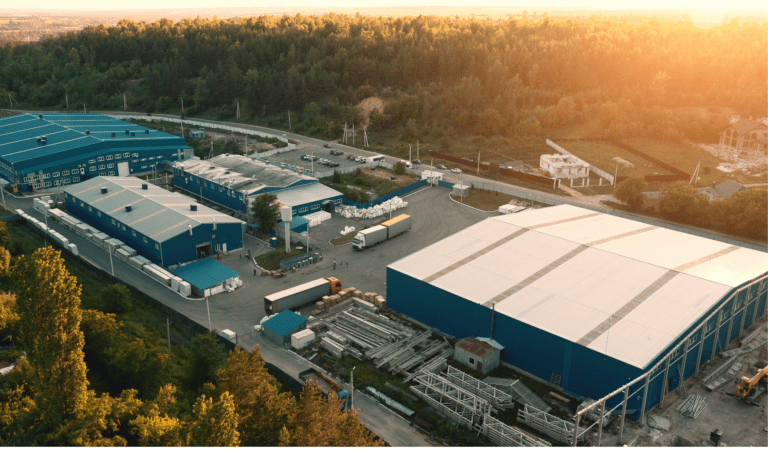As a fleet manager for commercial vehicles, you always want to safeguard the health of your business. From hiring the best employees to streamlining DVIR practices for your drivers, we understand that everything you do works towards upholding standards for your enterprise.
That’s why we aim to break down some of the complexities surrounding DOT Compliance and adherence to FMCSA guidelines. If your commercial business is involved with transporting hazardous materials, then you already know there are a bunch of regulations in place to stay DOT Compliant. Let’s talk hazardous material transportation: who’s liable to the regulations? What counts as hazardous material? And how do your drivers signal what they’re transporting?
HAZMAT SAFETY: IT’S THE LAW
According to the U.S. Department of Transportation, every year 3 billion tons of hazardous materials are transported in the United States every year. Despite the huge quantity of shipments moving across the country every day, fatalities are quite low: according to government data, only eight in-transit fatalities were reported in 2017 from hazardous materials. These regulations help keep drivers and the public safe from hazmat dangers. The Hazardous Materials Transportation Act (HMTA) governs this area.
DOT works with the FMCSA and the Pipeline and Hazardous Materials Safety Administration (PHMSA) to keep the roadways safe from hazardous materials. Among other things, fees are leveled for:
-
Failing to register as a transporter of hazardous materials
-
Not training employees and drivers to understand hazmat guidelines and safety precautions
-
Failing to have and maintain a security plan
WHO’S SUBJECT TO THE RULES?
If your fleet is responsible for loading or transporting hazardous materials, then all of these regulations are applicable to your drivers. The FMCSA guidelines are very explicit that the person transporting the material must be registered and trained. Also, the hazardous material itself must be appropriately classified and labeled:
No person may offer or accept a hazardous material for transportation in commerce unless that person is registered in conformance with subpart G of Part 107 of this chapter, if applicable, and the hazardous material is properly classed, described, packaged, marked, labeled, and in condition for shipment as required or authorized…
WHAT COUNTS AS HAZARDOUS MATERIALS?
According to FMSCA, there are nine classes of hazardous materials that drivers and employers need to be aware of. Some of the Classes are broken down further into Divisions as part of Federal regulations 49 CFR Parts 100-185:
CLASS 1: EXPLOSIVES
This includes items like ammunition or fireworks and is broken down into further categories:
-
Division 1.1 Mass Explosive Hazard
-
Division 1.2 Projection Hazard
-
Division 1.3 Mass Fire Hazard
-
Division 1.4 Minor Explosion Hazard
-
Division 1.5 Very Insensitive Explosives
-
Division 1.6 Extremely Insensitive Explosives
CLASS 2: GASES
Gases that are commonly transported are lighters, aerosols, carbon dioxide, and oxygen.
-
Division 2.1 Flammable Gases
-
Division 2.2 Non-Flammable Gases
-
Division 2.3 Poisonous or Toxic
CLASS 3: FLAMMABLE LIQUID AND COMBUSTIBLE LIQUID:
Includes materials whose Flash Point is not more than 141F. You might be surprised to learn that common materials like adhesives, paints, gasoline, and perfume can all fall under this category of hazardous materials.
CLASS 4: FLAMMABLE SOLID
According to Chem Safety Pro, commonly transported flammable solids include matches and alkali and are broken down into divisions:
-
Division 4.1 Flammable Solid
-
Division 4.2 Spontaneously Combustible Material
-
Division 4.3 Dangerous When Wet
CLASS 5: OXIDIZING SUBSTANCES
This Class includes hydrogen peroxide, oxygen generators, and sodium nitrite.
-
Division 5.1 Oxidizer
-
Division 5.2 Organic Peroxide
CLASS 6: POISONOUS AND INFECTIOUS
Cyanide and lead compounds fit into this Class, as do materials that can spread disease like biological samples.
-
Division 6.1 Poisonous (Toxic) Material
-
Division 6.2 Infection Substance
CLASS 7: RADIOACTIVE
This category includes enriched uranium and radioactive ores.
CLASS 8: CORROSIVE
These are substances that cause severe damage to human skin or surrounding materials. This can include sulfuric acid, sodium hydroxide, and batteries.
CLASS 9: MISCELLANEOUS
-
Environmentally Hazardous Substances
-
Elevated Temperature Material
-
Hazardous Wastes
-
Marine Pollutants.
HOW DO MOTOR CARRIERS COMPLY WITH THE LAW?
Though it’s impossible to cover the lengthy and extremely detailed regulations as laid out by FMCSA, here are some broad concepts to keep in mind:
KNOW YOUR MATERIALS
Surprisingly, some motor carriers may be transporting hazardous materials without even knowing it. While it’s obvious to most that shipping a Class i Explosive would require training and certification, some other common materials like batteries or ethanol might not initially strike you as hazardous. You need to make sure that you stay educated on what materials fall under the purview of these regulations.
CLASSIFY CORRECTLY
This is one of the most important aspects of staying compliant. Make sure that you’re familiar with the classification and division of the hazardous materials you and your fleet are transporting. In order to comply with the other requirements, like correct labeling and use of placards, you need to have an in-depth of knowledge of the hazardous material your team is transporting.
SHIPPING PAPERS REQUIRED
Hazardous materials need to be accompanied by shipping papers that describe the hazard class, identification number, and packaging group.
MARKING, LABELING, AND PLACARDS
Your drivers can’t be allowed to transport hazardous materials that haven’t been adequately labeled with all the pertinent information about the hazmat class and identification. Placards specific to the hazardous material being shipped must be in place on all vehicles that are transporting hazardous materials, with the following exception:
Placarding is not required for infectious substances, ORM-D, limited quantities, small quantity shipments, and combustible liquids in non-bulk packages.
LOADING AND UNLOADING
In order to be DOT Compliant, your employees need to adhere to the FMCSA’s guidelines on safely loading and unloading hazardous materials at any point during transport.
COMPATIBILITY
It’s the motor carrier’s responsibility to ensure that the materials you’re transporting are compatible. For example, cyanide cannot be shipped or carried alongside acids. To protect your team and stay compliant, make sure you’re knowledgeable on which materials can be shipped together—and which can’t.
BLOCKING AND BRACING
To make sure there are no accidents during transport, the hazardous materials need to be securely braced during transport.
INCIDENT REPORTING
If an incident occurs involved hazardous material at any point while your team is handling or transporting, you need to make sure it’s reported to DOT. This could range from a fatality to an evacuation to something like a spill, fire, or contamination. Depending on the incident and if it involved infectious materials, you may also have to report to the CDC.
Tip: Be prepared to also submit DOT Form F 5800 in case of an incident.
SECURITY PLAN
Federal guidelines demand that, as a hazmat employer, you have a security plan in place for your hazmat employees. That way, if something goes wrong at any point in the process—loading, transporting, blocking—your employees will have a course of action in place to mitigate damage.
EMPLOYEE TRAINING
As an employer, you need to make sure all of your employees that handle hazardous materials are hazmat trained. Keep in mind that this doesn’t just involve your drivers. Anyone who works to load, unload, or pack hazardous materials needs to be trained
-
General awareness/familiarization training – Employees need to know general concepts about regulation
-
Function-specific training – How should they properly load and unload? What needs to be included in placards? Hazmat employees need all the details in order to do their job correctly.
-
Safety training – Your hazmat employees need to know what safety precautions to take in case of an incident.
-
Security awareness training – Employees need to be trained on how and why to keep hazardous materials secure.
-
Testing – Part of training is ensuring that your fleet understands what they’ve been taught.
Tip on Employee Training: Make sure to do the training at least once every three years. According to Work Truck Online, there are no specific courses set out by DOT. This means it’s up to you to make sure your fleet learns everything they need to know about transporting hazardous materials.
HAZMAT ENDORSEMENT FOR DRIVERS
In addition to this, your employees need to have the HAZMAT endorsement on their CDL license with the DMV, which includes a TSA assessment and a security assessment before they can work with hazardous materials.
Tip: Depending on the quantities and type of hazardous materials you transport, you may have to get HM Registration or HS Permitting.
KEEP UP TO DATE
Rules and regulations governing the transportation of hazardous materials change frequently, and vary locally and from state to state. Make sure you’re well aware of the FMCSA’s shifting regulations and classifications so that you can protect your fleet, your drivers, and the public.
The hazardous materials that travel across the country every day in commercial vehicles help fuel cars, heat houses, and support our economy. It’s key to stay DOT Compliant as a fleet manager so that you can continue providing this valuable service with safety and efficiency.
Our goal at Whip Around is to make it easy to maintain DOT Compliance and sift through some of the complex aspects of the FMCSA’s guidelines. If you’re interested in learning more, check out our blog for more tips, or contact us today.






